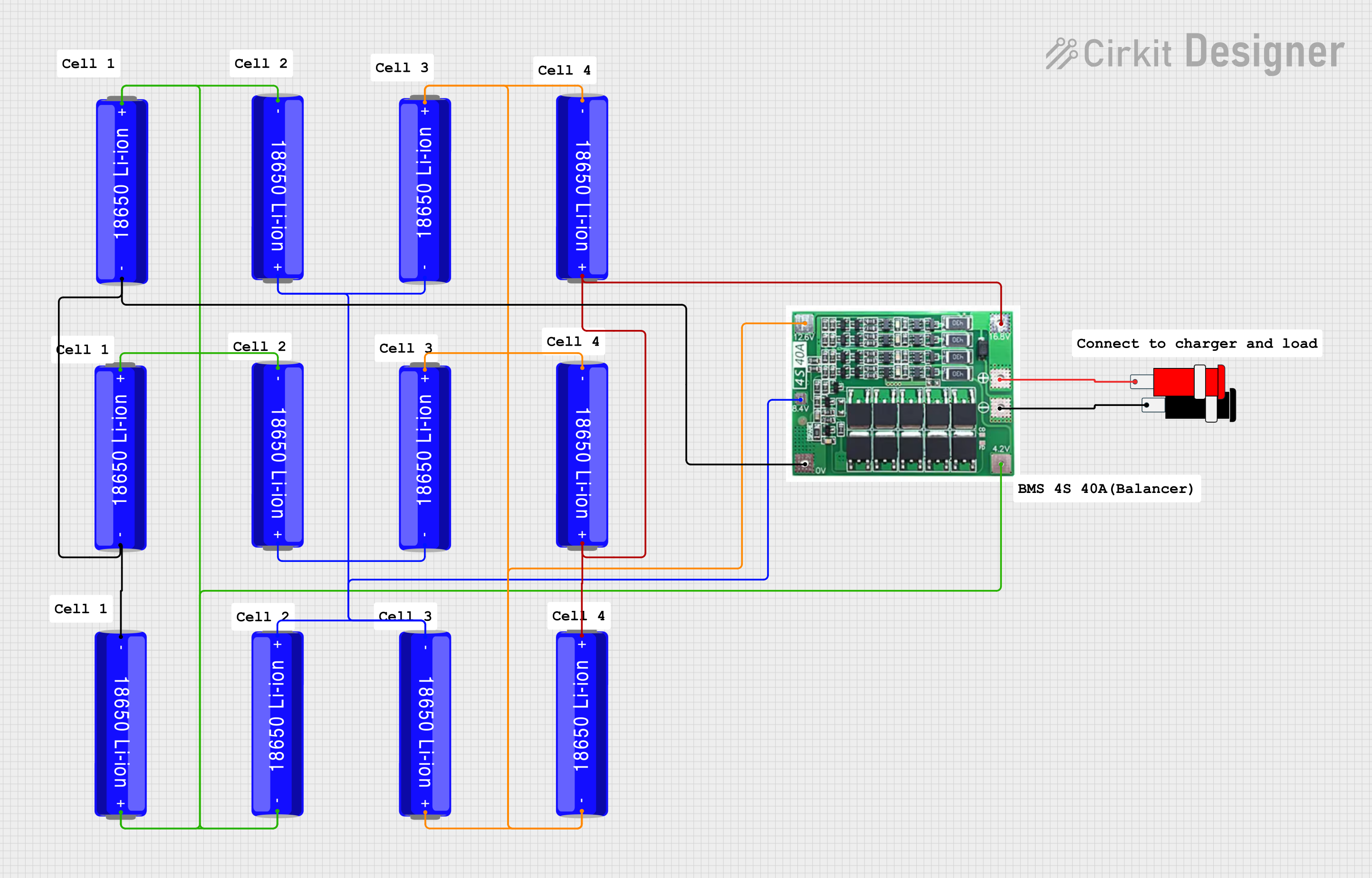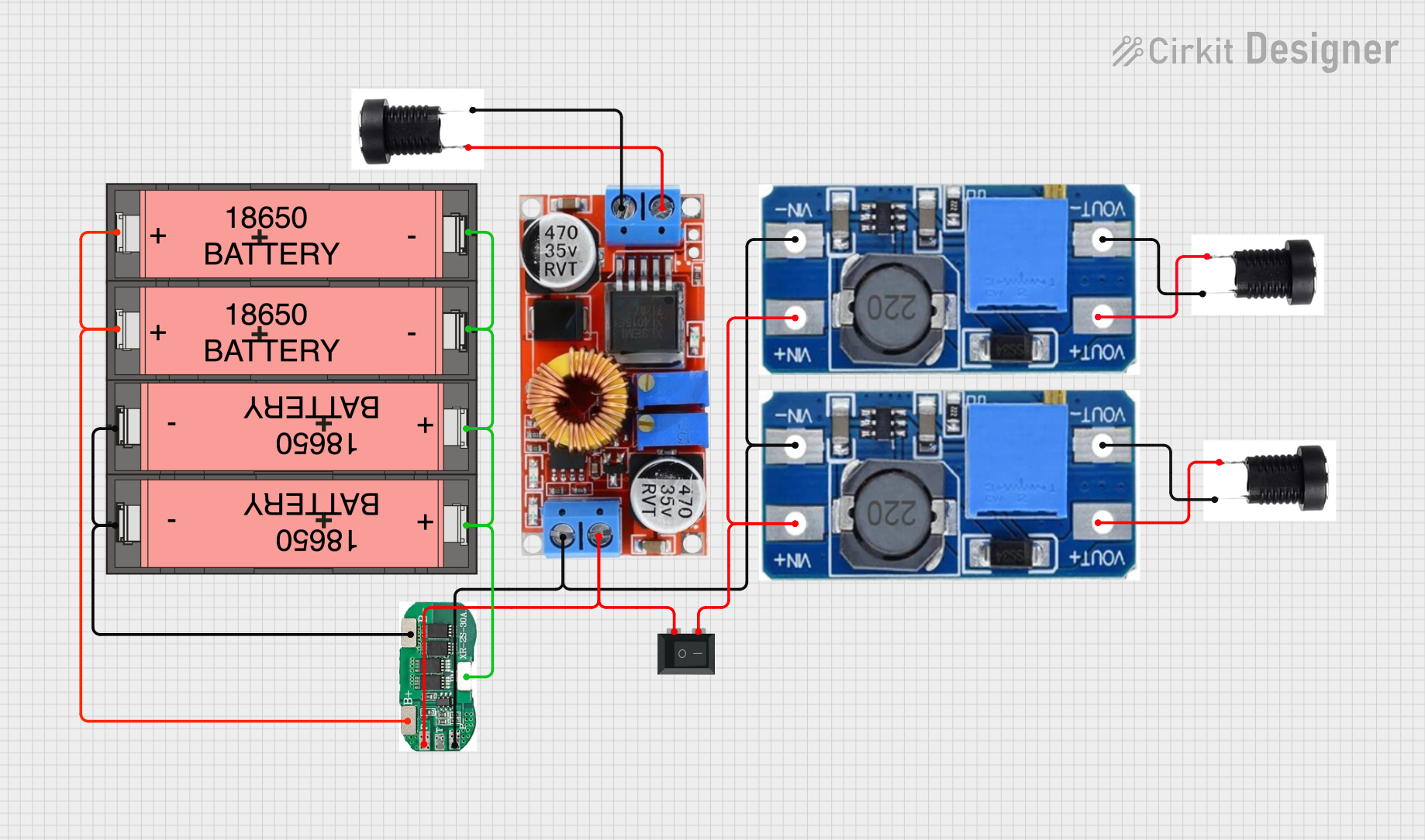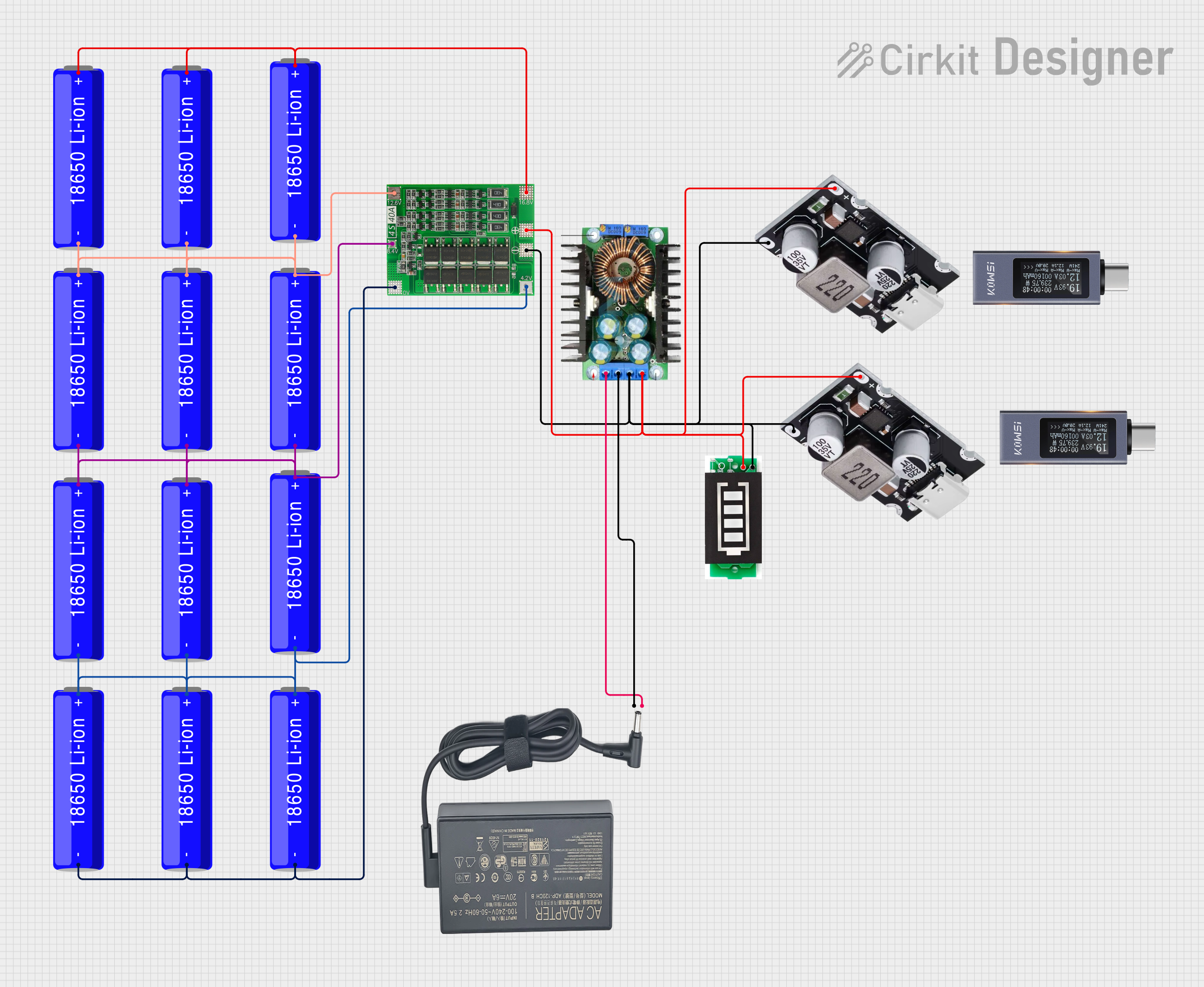
How to Use BMS 1S 4A 3.7V: Examples, Pinouts, and Specs

 Design with BMS 1S 4A 3.7V in Cirkit Designer
Design with BMS 1S 4A 3.7V in Cirkit DesignerIntroduction
The BMS 1S 4A 3.7V is a Battery Management System (BMS) designed for single-cell (1S) lithium-ion batteries. Manufactured by OEM, this component ensures the safe operation of lithium-ion batteries by providing protection against over-voltage, under-voltage, over-current, and short circuits. It is capable of handling a maximum continuous current of 4A and operates at a nominal voltage of 3.7V.
Explore Projects Built with BMS 1S 4A 3.7V

 Open Project in Cirkit Designer
Open Project in Cirkit Designer
 Open Project in Cirkit Designer
Open Project in Cirkit Designer
 Open Project in Cirkit Designer
Open Project in Cirkit Designer
 Open Project in Cirkit Designer
Open Project in Cirkit DesignerExplore Projects Built with BMS 1S 4A 3.7V

 Open Project in Cirkit Designer
Open Project in Cirkit Designer
 Open Project in Cirkit Designer
Open Project in Cirkit Designer
 Open Project in Cirkit Designer
Open Project in Cirkit Designer
 Open Project in Cirkit Designer
Open Project in Cirkit DesignerCommon Applications and Use Cases
- Power banks and portable chargers
- Single-cell lithium-ion battery packs
- Wearable devices and IoT gadgets
- Small robotics and DIY electronics projects
- LED lighting systems powered by lithium-ion batteries
Technical Specifications
The following table outlines the key technical details of the BMS 1S 4A 3.7V:
| Parameter | Value |
|---|---|
| Nominal Voltage | 3.7V |
| Maximum Continuous Current | 4A |
| Overcharge Protection Voltage | 4.25V ± 0.05V |
| Over-discharge Protection Voltage | 2.5V ± 0.1V |
| Over-current Protection | 6A ± 1A |
| Short Circuit Protection | Yes |
| Operating Temperature | -40°C to +85°C |
| Dimensions | 20mm x 15mm x 3mm |
Pin Configuration and Descriptions
The BMS 1S 4A 3.7V has the following pin configuration:
| Pin Name | Description |
|---|---|
| B+ | Positive terminal of the battery |
| B- | Negative terminal of the battery |
| P+ | Positive terminal of the load/charger |
| P- | Negative terminal of the load/charger |
Usage Instructions
How to Use the Component in a Circuit
Connect the Battery:
- Connect the positive terminal of the lithium-ion battery to the B+ pin.
- Connect the negative terminal of the battery to the B- pin.
Connect the Load/Charger:
- Connect the positive terminal of the load or charger to the P+ pin.
- Connect the negative terminal of the load or charger to the P- pin.
Verify Connections:
- Double-check all connections to ensure proper polarity and avoid short circuits.
Power On:
- Once all connections are secure, the BMS will automatically manage the battery's charging and discharging processes.
Important Considerations and Best Practices
- Battery Compatibility: Ensure the lithium-ion battery is a single-cell (1S) type with a nominal voltage of 3.7V.
- Current Limitations: Do not exceed the maximum continuous current rating of 4A to prevent damage to the BMS.
- Heat Management: If operating near the maximum current, ensure adequate ventilation or cooling to prevent overheating.
- Avoid Reverse Polarity: Connecting the battery or load with reversed polarity can permanently damage the BMS.
- Testing: Before integrating the BMS into a final product, test it with a multimeter to confirm proper operation.
Example: Using the BMS with an Arduino UNO
The BMS can be used to power an Arduino UNO from a single-cell lithium-ion battery. Below is an example of how to connect the BMS to the Arduino UNO:
- Connect the P+ and P- pins of the BMS to the Arduino's VIN and GND pins, respectively.
- Ensure the battery is connected to the B+ and B- pins of the BMS.
Here is a simple Arduino sketch to monitor the battery voltage:
// Define the analog pin connected to the battery voltage divider
const int batteryPin = A0;
// Define the reference voltage of the Arduino (5V for most boards)
const float referenceVoltage = 5.0;
// Define the voltage divider ratio (adjust based on your circuit)
const float voltageDividerRatio = 2.0;
void setup() {
Serial.begin(9600); // Initialize serial communication
}
void loop() {
// Read the analog value from the battery pin
int analogValue = analogRead(batteryPin);
// Convert the analog value to a voltage
float batteryVoltage = (analogValue / 1023.0) * referenceVoltage * voltageDividerRatio;
// Print the battery voltage to the Serial Monitor
Serial.print("Battery Voltage: ");
Serial.print(batteryVoltage);
Serial.println(" V");
delay(1000); // Wait for 1 second before the next reading
}
Note: Use a voltage divider circuit to scale down the battery voltage to a safe range for the Arduino's analog input pins.
Troubleshooting and FAQs
Common Issues and Solutions
BMS Not Powering the Load:
- Cause: The battery voltage may be below the over-discharge protection threshold (2.5V).
- Solution: Recharge the battery using a compatible charger.
Overheating During Operation:
- Cause: The load may be drawing more current than the BMS's maximum continuous current rating (4A).
- Solution: Reduce the load current or use a BMS with a higher current rating.
Short Circuit Protection Triggered:
- Cause: A short circuit occurred in the load or wiring.
- Solution: Disconnect the load, check for wiring issues, and reconnect after resolving the problem.
Battery Not Charging:
- Cause: The charger may not be compatible or the BMS's overcharge protection has been triggered.
- Solution: Verify the charger's output voltage and current. Ensure it matches the battery's specifications.
FAQs
Q1: Can this BMS be used with a multi-cell battery pack?
A1: No, this BMS is specifically designed for single-cell (1S) lithium-ion batteries. For multi-cell packs, use a BMS designed for the appropriate configuration.
Q2: What happens if the battery voltage drops below 2.5V?
A2: The BMS will disconnect the load to protect the battery from over-discharge. Recharge the battery to resume operation.
Q3: Can I use this BMS with a lithium-polymer (LiPo) battery?
A3: Yes, as long as the LiPo battery is a single-cell (1S) type with a nominal voltage of 3.7V.
Q4: Is the BMS waterproof?
A4: No, the BMS is not waterproof. Avoid exposing it to moisture or liquids.
By following this documentation, users can safely and effectively integrate the BMS 1S 4A 3.7V into their projects.